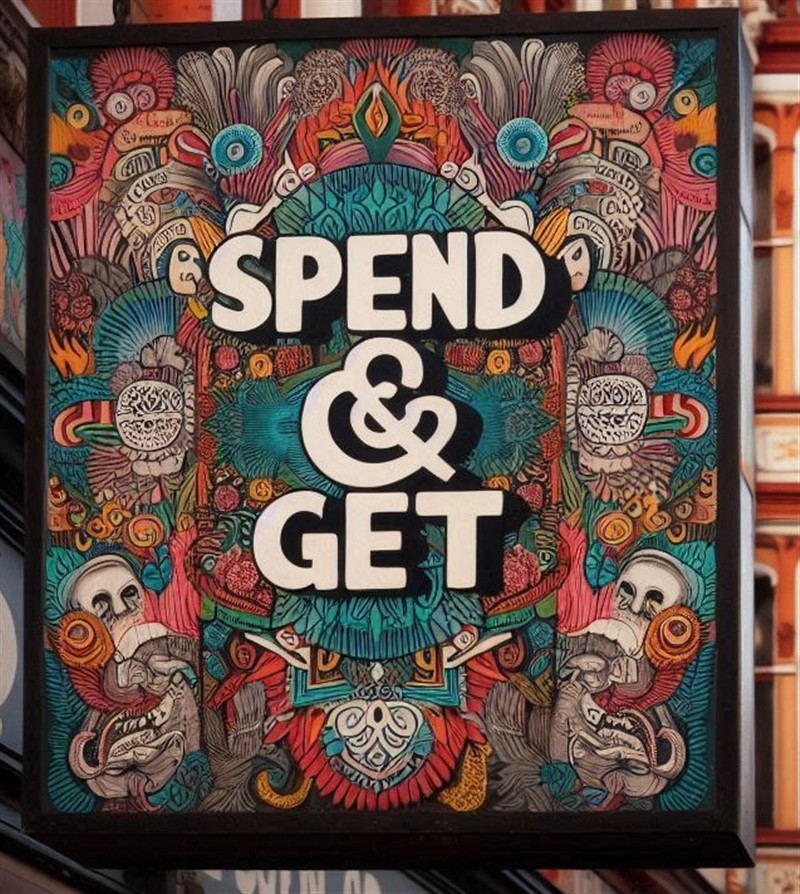
The Spend & Get promotion gives customers who buy in your shop a discount on future purchases. It's like a traditional discount voucher system, which I have discussed here. After doing a net search, I found several major Australian retailers use it. It includes Mitre 10, Supercheap Auto, Kogan, and The Good Guys. However, any retailer can use it; the big plus is that it requires no upfront marketing costs. Today, Spend & Get promotions are becoming a cornerstone of effective retail loyalty programs, and they are worth studying even if you do not use them.
Why Traditional Discount Vouchers Fall Short
Many small businesses still rely on basic discount vouchers, but these systems have significant drawbacks:
- Customers exploit voucher systems; a favourite method is to split purchases. For example, a shopper intending to buy two toys buys one and receives a voucher. That discount is used to buy a second toy. This undermines your intent to encourage future visits and instantly reduces your margins.
- Physical vouchers can be easily misused. Staff or opportunistic customers may collect discarded receipts or share vouchers, leading to unearned discounts. In some cases, this can result in substantial hidden costs that are difficult to track.
- Traditional vouchers are anonymous. You do not know who redeemed the voucher or what they bought. It limits your ability to make data-driven decisions and effectively target your marketing.
- Without customer data, you can't market to your customers and offer blanket discounts to unknown shoppers. I have discussed here how to set up a free marketing program.
How Spend & Get Promotions Solve These Problems
Spend & Get promotions are designed to address this problem.
- Requiring a short wait before redeeming credits prevents customers from splitting purchases to game you. It encourages return visits and protects your margins from being eroded.
-Because credits are deposited directly into individual loyalty accounts, only the customer who made the qualifying purchase can access the reward. There's no physical voucher to steal or share, reducing misuse and ensuring your incentives go to the right people.
- Every Spend & Get transaction is linked to a loyalty profile. You'll know who is buying what and when they shop. This data is invaluable for targeted marketing, which our loyalty marketing program can use. With access to customer contact details and purchase history, you can deliver an email campaign free of charge. I like sending a newsletter to those who haven't recently visited. You can get them back while they are still fresh in your mind.
The Business Benefits of Spend & Get Promotions
Improved Customer Retention
Loyalty programs are proven to increase customer retention. Research suggests loyal customers spend significantly more than new ones when incentivised to make repeat visits and purchase larger basket sizes. Traditional voucher systems are more expensive than loyalty-based promotions. It is vital, as a loyalty program typically cannot afford to operate at a cost over 1% of annual turnover. There is not a lot of margin there to play around with.
How to Implement Spend & Get
It is relatively straightforward to set up and manage Spend & Get promotions. There are two main approaches:
Automatic Implementation
The system automatically credits loyalty points with discounts when customers meet the spending threshold. This method is efficient and reduces the risk of human error. Customers receive notifications via email or SMS, and staff don't need to apply discounts manually.
Manual Activation
Sometimes, you may want staff to trigger the promotion by adding a specific code at checkout. This approach can be helpful for complex promotions.
For most people, we recommend automatic implementation. It has the advantage of simplicity.
Maximising Value: Best Practices for Small Retailers
Set Realistic Thresholds
Analyse your average transaction value and set thresholds to encourage higher spending without discouraging participation. For example, if your average sale is $20, a $50 threshold is too high; a $25–$30 threshold would be more effective. What you want is something a customer would think is a plausible limit.
Communicate Clearly
Ensure staff can explain the program benefits and redemption process. Use signage and digital communications to highlight how the promotion works and why joining your loyalty program is worthwhile.
Integrate Seamlessly
Test the POS system thoroughly before launch so you understand how it works.
Measuring Success and Continuous Improvement
As always, I suggest you track several key metrics (KPI). Without information, you do not know what is going on. I recommend such KPIs as:
- Loyalty program sign-ups
- Average transaction value
- Frequency of customer visits
- Your promotion costs are calculated as a percentage of revenue. As I said earlier, 1% should be your budget for loyalty marketing. Some marketers say 2%, but only with supplier support.
Want to learn more.
Contact our POS team today for more information on integrating Spend & Get promotions with your POS system.
FAQ
Q: How can I set up a Spend & Get?
A: There are two main approaches.
The first is automatic implementation, when the POS system automatically credits customers' loyalty accounts when they meet the spending threshold. Manual Activation: Staff manually apply for the promotion at checkout, which is valid for more complex offers.
Q: What are the best practices for running a Spend & Get promotion?
A: Set Realistic Thresholds: To maximise participation, base your spend thresholds on your average transaction value. Clear Communication: Train staff and use signage to explain the program's benefits. Seamless Integration: Test your POS system thoroughly to ensure smooth operation.
Q: How do I measure the success of a Spend & Get promotion?
A: Track these key performance indicators (KPIs):
Number of new loyalty program sign-ups
Average transaction value
Frequency of customer visits
Promotion discounts as a percentage of revenue
Q: What are the problems of traditional voucher systems?
A: Easy to Game:
Customers can split purchases to use multiple vouchers.
Prone to misuse as physical vouchers can be stolen or shared.
Lack of Data: Traditional vouchers are anonymous, limiting your ability to target marketing.
Written by:

Bernard Zimmermann is the founding director at POS Solutions, a leading point-of-sale system company with 45 years of industry experience. He consults to various organisations, from small businesses to large retailers and government institutions. Bernard is passionate about helping companies optimise their operations through innovative POS technology and enabling seamless customer experiences through effective software solutions.



